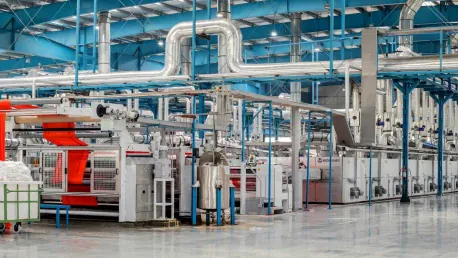The manufacturing sector in the United States is grappling with significant uncertainty as looming tariffs on goods from Canada, Mexico, and China cast a shadow over the industry. Following the election of President Donald Trump, there was a wave of optimism about a business-friendly climate. However, recent developments have injected a sense of unpredictability that is reshaping the landscape for manufacturers. Divergent reports from industry indicators highlight this uncertain environment, with S&P Global’s Purchasing Managers’ Index showing an increase, while the Institute for Supply Management’s Report on Business revealed a decline. As the specter of tariffs looms, manufacturers are finding it increasingly difficult to plan for the future.
Mixed Signals in Market Indicators
Conflicting Data on Manufacturing Activity
Manufacturers have been receiving mixed signals from key market indicators. While S&P Global’s Purchasing Managers’ Index (PMI) showed a slight improvement, the Institute for Supply Management’s (ISM) Report on Business painted a more somber picture with a decline. This divergence in data underscores the complexity facing the manufacturing sector. Erin McLaughlin of The Conference Board highlighted that this uncertainty, evidenced by a fall in new orders in February, is stymying progress. Firms are wary of making substantial investments or expanding operations in such a volatile environment.
Price volatility further complicates the situation, as manufacturers are caught in a bind when sourcing raw materials. The lack of price stability makes cost prediction a near-impossible task, causing hesitation in building up inventories. This hesitation means manufacturers are less likely to seize opportunities for growth or respond swiftly to market changes, essentially paralyzing potential advancements. Thus, uncertainty has become a significant roadblock, and a clear understanding of policy directions is urgently needed to mitigate these challenges.
The Shadow of Tariffs and Price Hikes
Even though President Trump’s tariffs on various goods have not yet taken effect, the anticipation alone is already influencing costs across the manufacturing sector. Teresa Fort from Dartmouth College pointed out that the mere expectation of tariffs can discourage firms from investing in new production lines or importing necessary goods. This anticipation restricts supply and subsequently drives up prices, having an effect similar to that of an actual tariff. The psychological impact on businesses cannot be overstated; firms brace themselves for increased costs and regulatory hurdles, which can be as damaging as the tariffs themselves.
This anxiety is reflected in their operational strategies. Companies are holding back on expansion and innovation, opting instead for a more cautious approach. The need to navigate through potential future barriers adds to operational costs, creating a feedback loop that exacerbates the volatility. Thus, the looming tariffs are not just a matter of future concern—they are already reshaping business strategies and financial planning in real-time, demonstrating the far-reaching impact of uncertainty on the manufacturing world.
Regional Disparities and Optimism
Varied Regional Responses
Regional Federal Reserve banks across the United States are reporting mixed outcomes within the manufacturing sector. For example, Emily Kerr from the Dallas Fed noted that while there is still an element of optimism, there is also considerable uncertainty, particularly within the state of Texas. Texas’s unique economic landscape, which includes a heavy reliance on both domestic production and international trade, makes it particularly vulnerable to tariff-related disruptions. Consequently, while manufacturers are hopeful for growth, the unpredictable policy environment tempers their expectations.
This regional variation mirrors the broader sentiment of cautious optimism laced with apprehension over future policies. In states with strong manufacturing bases, the potential for tariff-induced price hikes or supply chain interruptions looms large, prompting firms to adopt a wait-and-see stance. This variability in outlook across different regions complicates the national economic narrative, reflecting the interplay between optimism and caution that defines the current manufacturing landscape. Such regional disparities highlight the need for tailored policy solutions that can address specific regional concerns while fostering a stable nationwide economic environment.
The Need for Clear Policy Direction
The manufacturing sector in the United States is facing substantial uncertainty due to impending tariffs on goods from Canada, Mexico, and China. This situation has created a cloud of unpredictability over the industry. Following President Donald Trump’s election, there had been a surge of optimism about a business-friendly atmosphere. Nonetheless, recent developments have introduced a sense of instability that is transforming the landscape for manufacturers. Conflicting reports from industry indicators underscore this uncertain environment, with S&P Global’s Purchasing Managers’ Index indicating growth, while the Institute for Supply Management’s Report on Business shows a decline. As the threat of tariffs looms, manufacturers struggle to navigate this volatile landscape, where the unpredictability of trade policies adds layers of complexity to their operations. This makes it hard for them to invest confidently or make long-term decisions, affecting not only current production but also future growth prospects.









